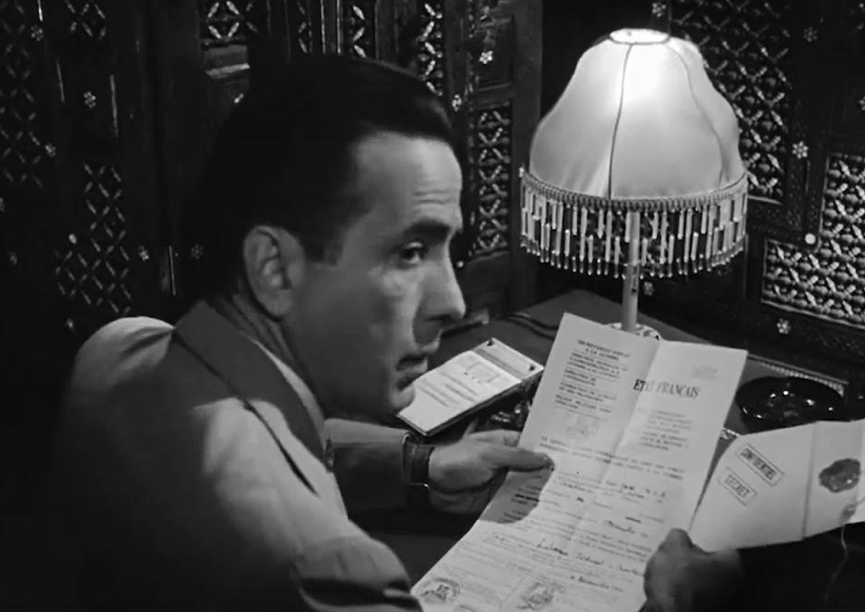Letters of Transit

The plot of Casablanca revolves around the letters of transit that guarantee passage out of the Nazi-occupied country and onto the plane to un-occupied Lisbon that will likely connect to a flight to Allied America and freedom. The film takes great pains to explain this in a sequence depicting the arduous journey: “And so a tortuous, round-about refugee trail sprang up. Paris to Marseilles, across the Mediterranean to Oran, then by train or auto or foot across the rim of Africa to Casablanca in French Morocco. Here the fortunate ones through money or influence or luck might obtain exit visas and scurry to Lisbon, and from Lisbon to the New World. But the others wait in Casablanca, and wait… and wait… and wait.”
The letters of transit are more than just pieces of paper. They’re the difference beween oppression and liberation, desperation and hope, life and death. And yet, paper is all they are. The letters of transit speak to the nightmarish, Kafkaesque absurdity of life under the Nazis, when a single stamp on a single piece of paper could destroy entire families and countries and ways of life. If you visit any museum that documents the Holocaust, you will find similar such pieces of paper.
Perhaps for this reason, we hardly ever see the exit visas on film. They’re the film’s primary McGuffin. They’re all anyone talks about. They’re bargained for and killed for and they’re worth sacrificing marriages for. But for the most part, all the viewer sees of them is a white envelope. Just a simple slender white envelope, like any other, utterly quotidian. If we saw what they really look like, some of their magic — and their menace — might evaporate. “Oh, it’s just a letter,” we might think. But letters are made up of sentences, and some are death sentences.

